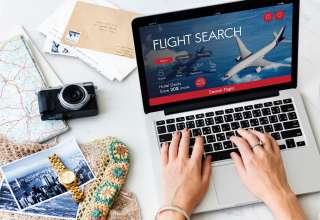We love our cars. We want them to look and drive as well as they can. From the powder coating to the fancy wheels, how we take care of our car says something about us. As winter approaches, preparing for driving in colder conditions becomes crucial for both the safety and the well-being of your vehicle. From equipping your car to handling winter-specific maintenance, here’s a comprehensive guide to help you navigate winter driving and care for your vehicle during the colder months.
Preparing for winter driving:
1. Check Your Tires:
Ensure your tires have sufficient tread depth for traction on snow and ice. Consider using winter tires designed for improved grip in cold conditions.
2. Monitor fluids:
Check and maintain proper levels of oil, coolant, and windshield wiper fluid. Use winter-grade windshield washer fluid to prevent freezing.
3. Test Your Battery:
Cold weather can strain your battery. Have it tested to ensure it’s in good condition, as winter requires more power to start the engine.
4. Inspect Lights:
Ensure all lights—headlights, brake lights, and turn signals—are working correctly. Winter brings reduced daylight, making visibility crucial.
5. Carry Emergency Supplies:
Keep a survival kit in your car, including a flashlight, blankets, extra clothing, non-perishable snacks, a first-aid kit, and a portable phone charger.
Winter Driving Tips:
1. Drive Slowly:
Reduce speed and increase the following distance to allow for longer braking distances on icy or snowy roads.
2. Brake and Accelerate Gently:
Abrupt movements can cause skidding. Gradually apply brakes and accelerate to maintain control.
3. Avoid Cruise Control:
In slippery conditions, using cruise control can reduce your control over the vehicle. Drive manually to have better control over speed.
4. Clear Snow Before Driving:
Remove all snow and ice from your car, including windows, mirrors, headlights, and the roof, to ensure visibility and prevent hazards for other drivers.
5. Be Prepared for Emergency Situations:
Keep your phone charged, and inform someone about your route. If you get stuck, stay in your vehicle, call for help, and use your emergency supplies.
Winter Car Maintenance:
1. Regularly Wash Your Car:
Winter roads are often treated with salt and chemicals, leading to rust and corrosion. Regular car washes help prevent this damage.
2. Protect the Exterior:
Apply a wax or sealant to the car’s exterior to protect it from salt, grime, and moisture, which can cause paint damage.
3. Check and Maintain Fluid Levels:
Cold weather can affect fluid viscosity. Ensure antifreeze, oil, and other essential fluids are at optimal levels.
4. Keep Your Gas Tank at Least Half Full:
This prevents moisture from accumulating in the fuel lines and ensures you have ample fuel in case of unexpected delays.
5. Store Necessary Equipment:
Keep a snow brush, ice scraper, and a small shovel in your car for clearing snow and ice buildup.
Additional Winter Driving Tips:
1. Know Your Route:
Before heading out, check the weather and road conditions along your planned route. Opt for well-traveled roads and highways that are more likely to be cleared and treated during snow or ice events.
2. Practice Skid Control:
Find an empty, safe space to practice how to handle skidding. Learn to steer into the skid and avoid slamming on brakes, allowing for better control in case of a skid on icy roads.
Car Maintenance for Extreme Cold:
1. Engine Warm-Up:
In extremely cold weather, allow your engine to warm up for a few minutes before driving. This helps distribute the oil through the engine, allowing it to run more smoothly.
2. Inspect Belts and Hoses:
Extreme cold can cause belts and hoses to become brittle or crack. Regularly inspect these components for any signs of wear or damage and replace them as necessary to prevent unexpected breakdowns in freezing conditions.
While winter car care focuses on keeping your vehicle running smoothly in harsh conditions, ensuring its security throughout the year is equally important. Enter car tracker devices! These innovative tools utilise GPS technology to pinpoint your car’s location in real-time, significantly boosting the chances of swift recovery by authorities if your car is stolen, even during a winter storm when visibility might be limited. But car trackers go beyond just winter theft recovery. Many offer features like movement alerts that notify you if your car is tampered with while parked in a snowy lot, or geofencing, which can prevent theft attempts altogether by sending an alert if your car leaves a designated area without permission, say while you’re warming it up on a cold morning. With their ability to deter theft and expedite recovery year-round, car tracking devices offer valuable protection for any car owner, not just during the winter months.
In conclusion, winter driving demands extra caution and preparation to navigate safely through challenging conditions. Ensuring your vehicle is in top condition and equipped with the necessary supplies significantly reduces the risk of accidents or breakdowns. By following these tips for both winter driving and vehicle maintenance, you can stay safe, maintain your car’s health, and confidently tackle the colder months on the road. Remember, taking proactive measures for winter driving not only safeguards you but also promotes a smoother and more secure journey for everyone on the road.
Read More: How to Protect Your Car from Winter Damage.












